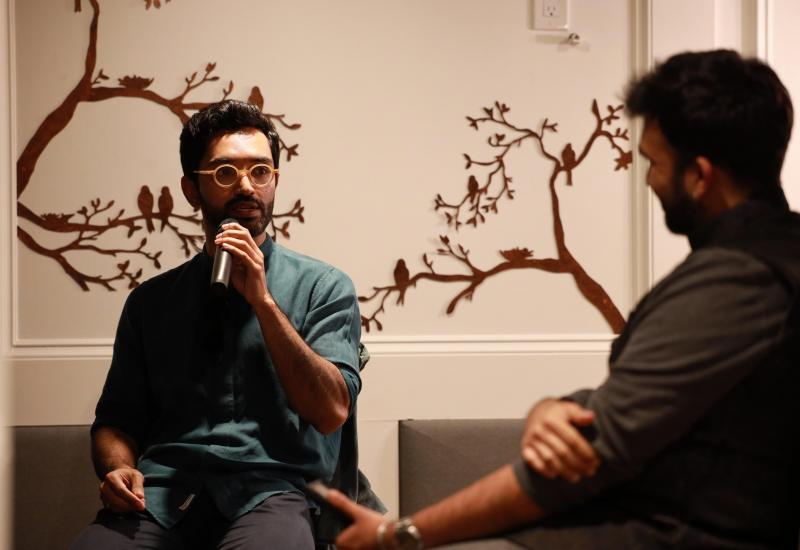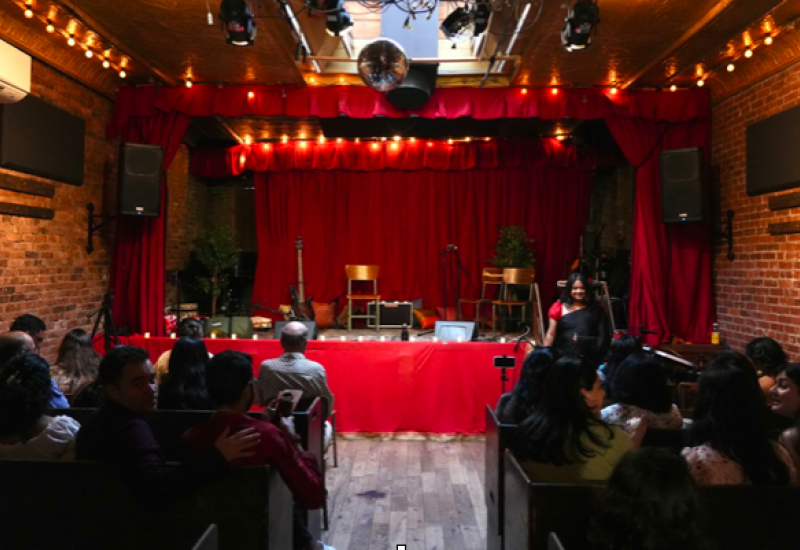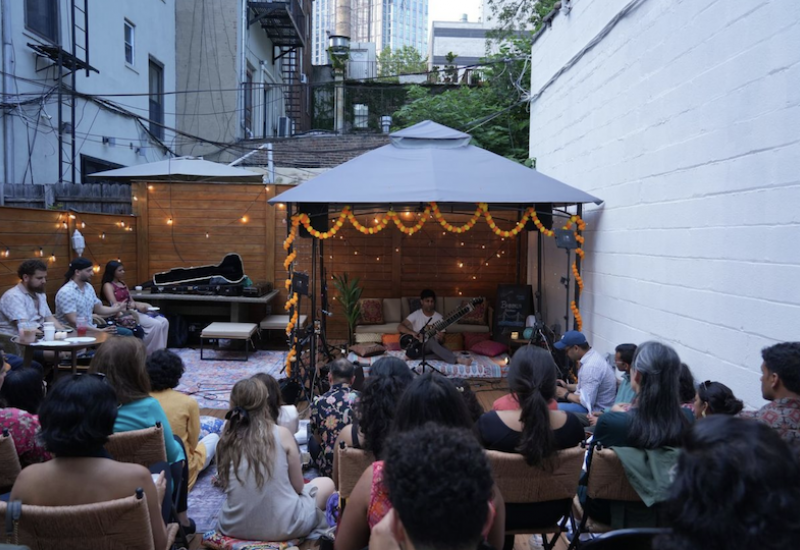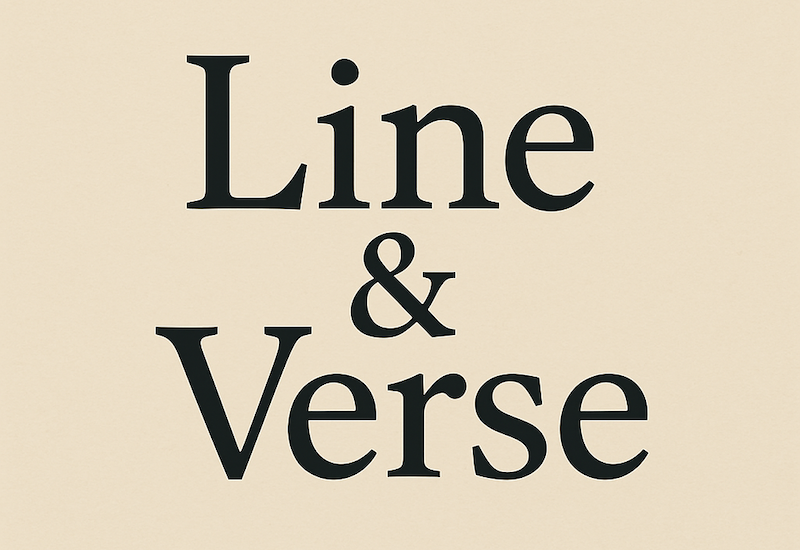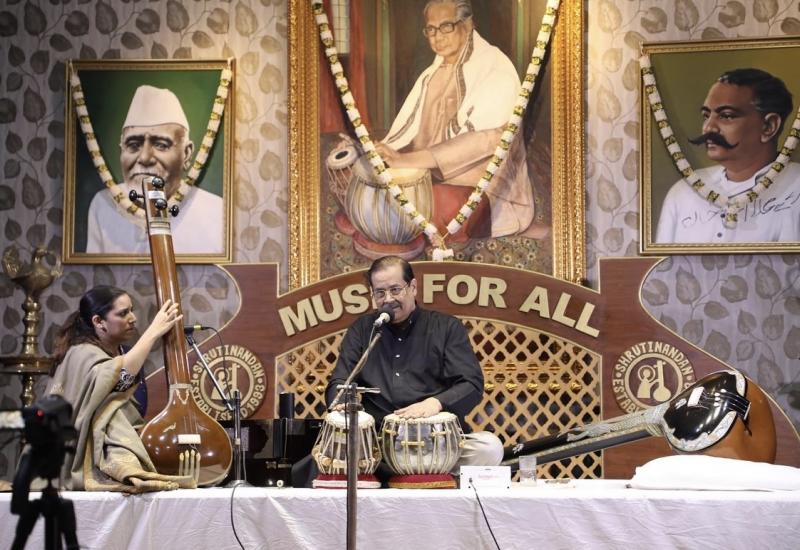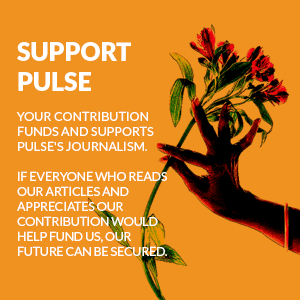Line & Verse: Erasing Borders: Where South Asian Dance Meets the World
Every September, New York City’s cultural calendar is marked by the Erasing Borders Dance Festival, presented by the Indo-American Arts Council (IAAC).
In 2008, IAAC began this annual dance festival with a mission to create a platform for exceptional Indian classical, folk, and contemporary dance in the United States. Over the past 17 years, it has grown into New York’s premier Indian dance festival gaining international recognition for both its programming and its cultural impact.
IAAC’s guiding principles, as stated on their website, are clear: 'Build an awareness of Indian artistic disciplines in North America… Promote and build an interested, aware and educated audience… Create a network for all the various artistic disciplines to share information and ideas… Foster an exchange of artists and arts-related information between India and the United States.’ Dance holds a particularly important place within IAAC’s mission with the annual Erasing Borders Dance Festival standing as a flagship event. In addition to dance, IAAC’s Literary Festival has seen remarkable growth over recent years, now supported by a board of curators and operating on a submission-based model. IAAC’s annual New York Indian Film Festival further showcases their commitment to celebrating and promoting Indian arts across multiple disciplines.
Under the leadership of Suman Gollamudi, Executive Director of IAAC, who in collaboration with various festival directors, oversees all of IAAC’s programming throughout the year, IAAC’s mission comes alive. Whilst fuelled by institutional grants, corporate sponsorship, and individual donors from both the U.S. and India, IAAC finds its ‘strength in its volunteers,’ she emphasizes.
The 2025 Erasing Borders Dance Festival program reflects the festival’s hallmark blend of emerging talent and seasoned masters. Both nights open with performances from students of US-based dance schools, a choice deliberately made year-on-year by the curatorial committee to encourage emerging artists, and close with internationally acclaimed India-based Bharatanatyam artists Priyadarsini Govind and Rama Vaidyanathan. This year’s line-up showcases exponents of Indian dance forms including Odissi, Kuchipudi, Kathak, contemporary, and Bharatanatyam, underscoring the festival’s commitment to variety and depth. With the exception of the two marquee artists from India, all performers are partially or fully based in the United States, reflecting IAAC’s intentional focus on nurturing and spotlighting local and diasporic talent. As Suman explains, ‘Giving local artists opportunities to be on the same platform as big marquee artists’ is central to IAAC’s vision.
'Our curation is deliberate,’ notes Suman. Selection is multi-faceted, with quality of work being the first and foremost consideration. Additional considerations include breadth of dance forms, balance of group and solo works, gender representation, space for new concepts and budgetary requirements. The process follows a submission-based model, inviting artists from around the world to apply, ensuring that the final line-up reflects both excellence and diversity.
The festival’s artistic vision rests in the hands of Festival Director Deepshika Chatterjee, a tenured faculty member of Theatre at Hunter College CUNY, and a core team of curators who have nurtured Erasing Borders into an event with global stature. ‘We have a group that really understands the organization and festival and are able to look at it from a comprehensive perspective,’ says Suman.
Artists are supported beyond their acceptance. Months before the curtain rises, curators mentor participants, offering feedback, refining works, and sharing audience insights gained from years of experience. This approach aims to turn each performance into the result of sustained collaboration, not just a one-night appearance.
While the Erasing Borders dance festival dazzles over its two main evenings, IAAC’s commitment extends beyond. Additional programming includes the Dr. Sunil Kothari Honorary Lecture, given this year by Govind, and a panel discussion led by senior curator Uttara Asha Coorlawala, herself a celebrated dancer and professor in the Barnard/Columbia dance program.
Erasing Borders remains a testament to endurance, adaptability, and artistic excellence. That said, the absence of live music, while understandable given time and budgetary constraints, technical challenges and limited rehearsal windows, leaves a noticeable gap in dance forms where music and movement are inextricably linked. Indian classical dance is built on the dynamic interplay between dancer and musician, and I hope future editions will find creative ways to bring that synergy back.
The festival’s concentrated September schedule delivers a powerful burst of activity, but it also highlights the need for more consistent, year-round programming to support local artists and keep audiences engaged beyond the autumn.
The curatorial committee’s stability has preserved its vision and artistic integrity - it is made up of a core group of curators who have been there since the festival’s inception, with a few members added over the years. However, a question is raised of how often new voices are invited into the conversation. The challenge and opportunity lies in balancing the hard-earned wisdom of experience with the invigorating energy of fresh perspectives.
Looking ahead, IAAC’s goal for the Erasing Borders Dance Festival is clear: to expand dance offerings, incorporate more folk traditions (for example, Purulia Chhau was streamed from a village square during the pandemic), move into larger venues and welcome a truly diverse audience. As Suman puts it, ‘We have to survive and thrive’, and part of that is making sure to have a “cross-section of society to come and explore and understand the diversity of dance forms.”
This year’s seventeenth annual festival takes place Saturday, September 20, 2025 and Sunday, September 21, 2025 at 6pm at the Ailey Citigroup Theater (405 W 55th St, New York, NY). Tickets start at $25 and can be purchased online here.
Editorial note: We are retaining US spelling conventions for Line & Verse








